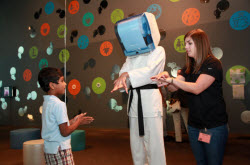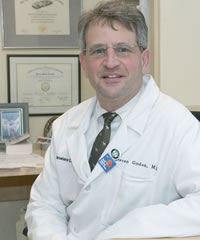Categories: Hand Hygiene
January 23rd, 2012 12:29 pm ET -
.

Art of Washing Hands
Guest Author – Bill Sleeper
Georgia-Pacific Professional
Each year, more than 200,000 people are hospitalized with the flu and 36,000 die from complications of the virus, according to the CDC. While it may seem like a mundane daily task, washing your hands is the single most effective way to prevent the spread of disease.
As a leading provider of hygienic washroom solutions, Georgia-Pacific Professional is committed to educating citizens about proper hand hygiene practices. Our ongoing efforts are showcased through a variety of campaigns, activities and initiatives that teach and remind people of all ages about the importance of hand washing and drying. Entering its third year, our Art of Washing Hands program features a karate-themed Mo – Georgia-Pacific Professional’s VP of Hygiene and Chairman of Cool – to educate kids about the importance of hand hygiene in a fun, interactive way. Last year we launched Spread Wellness, a campaign aimed at teaching people proper hand washing techniques and encouraging them to share these practices wherever they go.
 3 Comments -
Read more
3 Comments -
Read more

Categories: Hand Hygiene, Healthcare-associated infections
May 10th, 2011 6:19 am ET -
.

Armando and Victoria Nahum
Author – Victoria Nahum
Co-Founder and Director
Safe Care Campaign (Atlanta, Georgia)
My name is Victoria Nahum. Almost 5 years ago, my husband Armando and I learned the hardest lesson of our lives. We learned that losing our 27 year old son Joshua to a healthcare-associated infection didn’t have to happen; even worse, his untimely death may have been prevented by some simple steps we wish we would have known back then. [Read Josh’s story.]
Perhaps the bitter knowledge that he did not die of his original diagnosis (injuries from a skydiving accident), but died instead of what health experts tell us was most likely preventable (a Gram-negative infection he caught during his care) is the hardest thing we live with every day.
In 2006, when Josh was first admitted to the hospital his father and I read and obeyed the sign on the door that simply said, “All visitors must wash their hands before entering the ICU.”
 13 Comments -
Read more
13 Comments -
Read more

Categories: Hand Hygiene, Healthcare-associated infections, State HAI Prevention
May 6th, 2011 10:56 am ET -
.

Dixie Roberts, APRN, C, MPH
Author – Dixie Roberts, APRN, C, MPH
Healthcare Associated Infections Coordinator
South Carolina Department of Health and Environmental Control
“He who doesn’t prevent grime when he can, encourages it”
In 2007, with the knowledge that hand hygiene compliance is directly related to hospital acquired infections (HAIs), the South Carolina Hospital Association (SCHA) launched the first statewide hand hygiene campaign in alignment with the World Health Organization’s (WHO) international hand hygiene campaign. DHEC, AARP, Mothers Against Medical Error and APIC- Palmetto Chapter soon joined the effort.
This campaign had to be engaging in order to be successful. We selected the theme “Grime Scene Investigators: South Carolina” (GSI:SC), a parody on the popular television series CSI. Enthused about our initiative, the South Carolina Chapter of HOSA and the South Carolina Department of Education joined our effort.
In July 2009 a “summons” was sent to hospital infection prevention and marketing departments and public health regions calling them for training in Grime Scene Investigation. Each hospital received a GSI:SC kit with everything needed to set up a “grime scene” to create awareness while educating people on proper hand hygiene and its importance. Every SCHA member facility and public health region demonstrated their support of the campaign by designating a point of contact.
 4 Comments -
Read more
4 Comments -
Read more

Categories: Hand Hygiene, Healthcare-associated infections
May 5th, 2011 11:43 am ET -
.

Katherine Ellingson, PhD
Author – Kate Ellingson, Ph.D.
CDC Epidemiologist
CDC’s Division of Healthcare Quality Promotiona
Hand hygiene is a simple practice that has been at the core of infection prevention for over 150 years. Yet getting healthcare personnel to follow recommended hand hygiene practices in today’s complex and demanding healthcare environment continues to be a monumental challenge. Even in the developed world, adherence is estimated to be less than 50%, meaning healthcare personnel practice hand hygiene fewer than half of the times that they should.
In the past year, the visibility of novel strategies to improve hand hygiene in healthcare has increased — from technologies that can monitor and report hand hygiene performance in real time, to smartphone applications that streamline hand hygiene data collection by human observers, to financial incentive schemes that pay or fine healthcare personnel based on hand hygiene performance. We at CDC are very interested and engaged in understanding how these strategies work, what their strengths and limitations are, and how feasible and affordable their implementation is. Creative or high-tech solutions must work in parallel with the fundamental building blocks of hand hygiene improvement: education, grassroots promotion, and leadership.
 9 Comments -
Read more
9 Comments -
Read more

Categories: Antibiotic use, Hand Hygiene, Healthcare-associated infections
April 6th, 2011 8:17 am ET -

Steven M. Gordon, MD, FACP
Guest Author – Steven M. Gordon, MD, FACP
President of SHEA
The Society for Healthcare Epidemiology of America’s 21st Annual Meeting provided a forum for discussing the latest research, evidence and advances in healthcare epidemiology, with the goal of bringing this knowledge one step closer to bedside implementation and the elimination of healthcare-associated infections. More than 1,600 academicians, researchers, frontline providers, infection preventionists and public health officials attended the four-day event in Dallas.
Two studies that highlight the breadth of the work presented at this year’s meeting are highlighted below. The first, from researchers with the Salt Lake City VA Healthcare System, demonstrates the rising use of broad-spectrum antibiotics over a five-year period. This increased use may be impacting the efficacy of our most powerful antibiotics.
In an era of multi-drug resistant organisms, clinicians are placed in a difficult situation. Because treatment outcomes of many bacterial infections are influenced by the timing of appropriate therapy, the increasing presence of resistant organisms triggers greater use of these powerful antibiotics for proven or suspected infections in hospitalized patients. Studies like this are critical to our understanding of antibiotic resistance.
 1 Comment -
Read more
1 Comment -
Read more







